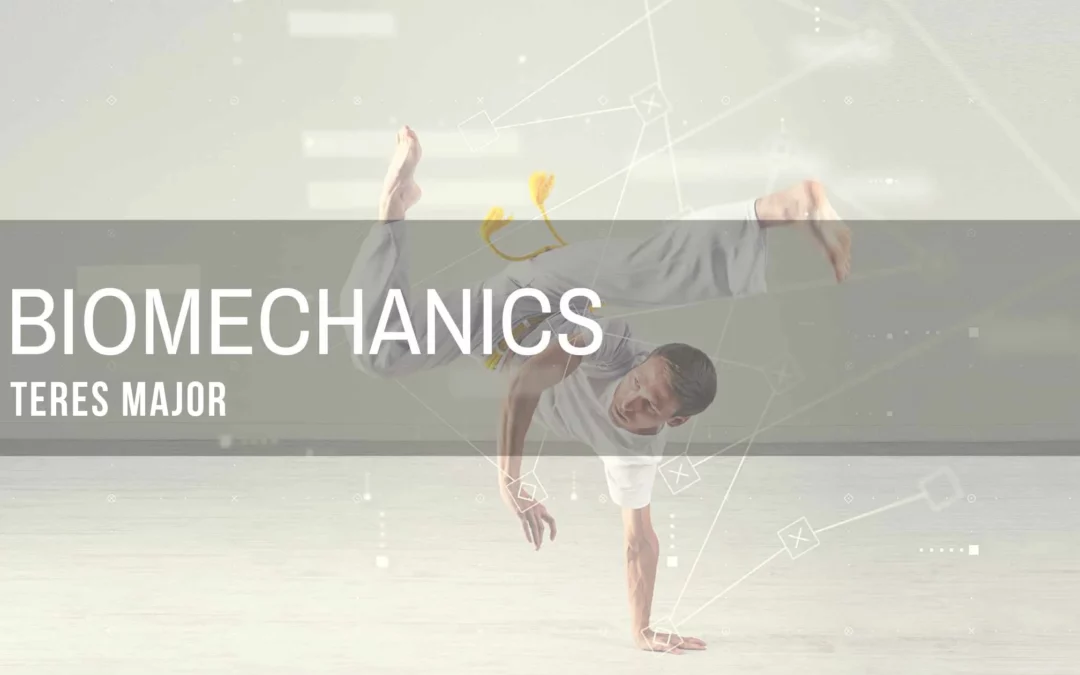Shoulder Stability
The shoulder is a pretty complicated area of the body. While it has the greatest range of motion of any joint, it has to sacrifice stability for its advantage with mobility. It’s made up of the humerus (upper arm), scapula (shoulder blade), clavicle (collarbone), and thorax (rib cage). These adjoining segments make up the shoulder girdle, or the four joints that compose the structure of the shoulder.
Because of its complexity of movement, multiple muscles and connective tissues are required to both stabilize the joints and move the arm. These tissues often become overloaded leading to shoulder impingement.
Shoulder pain is the most prevalent diagnosis reported and often creates accumulative injury cycles in the neck, arms, and even down into the hips. Let’s look at the problem and solution for this below!The Problem
Glenohumeral Joint
The glenohumeral joint is the primary joint of the shoulder girdle. It’s a ball and socket joint between the head of the humerus and the glenoid of the scapula. The head of the humerus is much larger than the surface area of the glenoid, which creates less stability and a greater reliance on the muscles and ligaments that attach and stabilize the humerus. Think of the glenoid as a golf tee and the head of the humerus as a golf ball. The rotator cuff muscles wrap around the head of the humerus and allow it to spin on the tee.
The problem arises when the tee, or glenoid, of the scapula becomes unstable. The muscles responsible for stabilizing the scapula (like the rhomboid) often become adaptively lengthened from poor posture. This causes the shoulder blade to become hypermobile, altering the natural alignment of the humeral head in the joint. In essence, the connective tissues like the rotator cuff become pinched between the ball and socket; this is called subacromial impingement. The rotator cuff may become weakened, or even injured. In fact, strains, ruptures, and tendinopathies account for 75 to 80% of shoulder injuries.
How Does This Happen?
As previously stated, poor posture due to movement redundancies are often the culprit. Daily activities that encourage overhead arm movement creates repetitive compression of the structures that make up the shoulder. This repetitive movement leads to irritation and inflammation. Prolonged inflammation can cause muscular inefficiency, specifically affecting the rotator cuff. It’s important to note that any arm elevation over 90 degrees creates impingement.
Yes, There is a Solution!
- Recognize which muscles are responsible for proper scapular stability and strengthen them.
- Increase the mobility of the muscles that cause excess internal rotation of the humerus.
- Coordinate your conditioning with functional movement patterns seen in everyday life.
- Reduce movements that emphasize internal rotation of the humerus and excess overhead
movements.
How to Assess?
Place your back towards a wall with your heels, butt, and shoulder blades snug against the wall. Your arms should be bent at 90 degrees at shoulder height. Your lower back should be within a finger’s width from the wall. Slowly lift your arms over your head whilst trying to keep the backs of your hands in contact with the wall.
- Are you able to comfortably keep your fingers in contact with the wall the entire time?
- Do you notice your lower back arching away from the wall?
- Do you notice either of your shoulders shrugging as you lift your arms overhead?
- Do your elbows remain bent at the top of the shoulder press?
If you answered yes to any of these questions, you tested positive for this common posture problem and you’ll want to pay attention to what comes next and watch the accompanying video on how to correct it.
Simple Corrective Methods
Correcting Overactive Muscles
Because we move in patterns, our bodies favor the use of certain muscle groups over others. Since we complete tasks that predispose us towards internally rotating the arms, the muscles that facilitate internal rotation like the teres major can become tight, short, and inflexible. We’ll want to lengthen the teres major via self-myofascial release, then follow the myofascial release with static stretching.
Below are the muscles we’ll want to focus on for chest breathing:
- Teres Major
- Rolling or self-applied pressure using self-myofascial release for 30-60 seconds each
- Stretch or lengthen each for 30-60 seconds each
Correcting Underactive Muscles
As mentioned above, pain in the body is commonly caused when how we move forces certain muscles to work overtime, while other muscles become lazy and don’t want to function. We’ll need to wake up these lazy muscles through isolated strength movements. The rotator cuff and rhomboids are the muscles needing developed in this segment.
- Rotator Cuff | band external rotation
- Rhomboids| Single arm sb cobra
- Latissimus dorsi and scapular stabilizers | Split stance band row – 2 sets on each muscle group 10-15 reps using a slow opening of the muscle, isolated hold at the bottom of the movement, followed by a controlled shortening of the muscle.
Now that you know which muscles are typically underactive and overactive, let’s put it all together for you. Watch the video for a step-by-step breakdown on how to target each of these areas. Before you get started, make sure you have a lacrosse ball, and exercise band handy.
Start off by applying the techniques three times a week and build from there. Every so often, reassess your posture and see how far you’ve progressed. Soon you’ll start to see noticeable changes in your body position and mobility!




